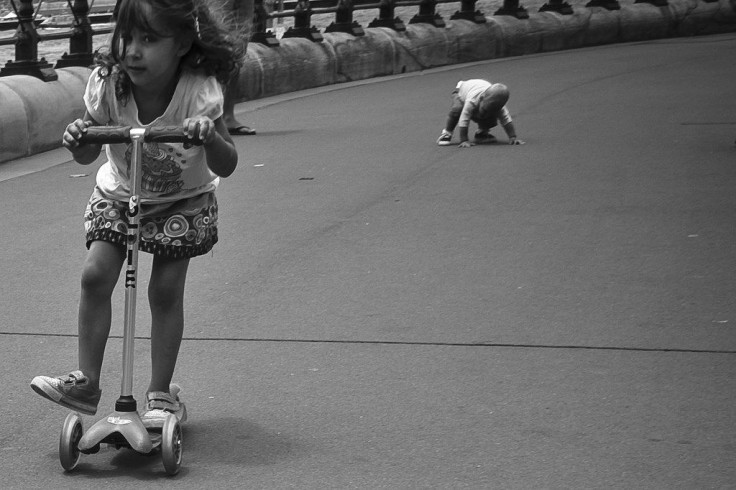Kids Are Clumsy Runners Because They Lack Muscle Strength To Support Fluid Movement

Kids are clumsy, especially when they run. No way around it. We often attribute their awkward gait to childhood development and trying to match their parents' stride for stride. A review published in The Journal of Experimental Biology suggests that a child’s lack of grace is less about growing into their movements (“walk before you run” sound familiar) and more about physiological factors, such as muscle development and shorter limbs.
“Some scientists see a young child appearing to walk and run uneconomically and then attribute it to being underdeveloped,” said Jim Usherwood from the Royal Veterinary College, UK in a statement. “You can see that by watching a 3-year-old running; they barely get off the ground. You activate the muscles and there is a physiological cost to activating it.”
Usherwood and his colleague Tatjana Hubel recruited 18 children between the ages of 1.1 and 4.7 years old. Two of the children were Usherwood’s daughters. To track each child’s movement, the research team used a camera system that tracked reflective dots specifically positioned on the children’s limbs. Children were asked to match their parent’s speed, go faster, or go slower, while researchers were careful not to influence the gait they used.
Over the course of their investigation, Usherwood and Hubel found that while time was misinterpreting their results, another factor was also unaccounted for: muscle. They found that since children’s legs are shorter than adults’, it takes a shorter amount of time for them to push up and away from the ground, it means their muscles have less time to contract and generate the power they need, and it means their feet are on the ground for a longer period of time in between each stride.
The research team was only able to recreate a successful model showing the movements of both child and parent after they accounted for the amount of muscle a person would need to propel them along a certain speed. So, a child running with shorter limbs compared to their adult counterpart requires more time to lift each leg in the air during a full stride. A child’s shorter limbs and underdeveloped muscles often do not provide them with enough time to stop them from falling flat on their face while running.
Source: Hubel T, Usherwood J. Children and adults minimise activated muscle volume by selecting gait parameters that balance gross mechanical power and work demands. The Journal of Experimental Biology. 2015.



























